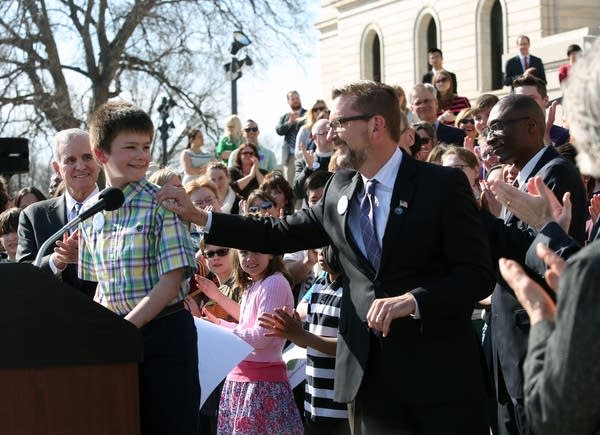Dayton signs tougher anti-bullying bill into law

Jake Ross, 11, of Forest Lake, MN , is congratulated by Sen. Scott Dibble, right, as Gov. Mark Dayton looks on as Jake speaks to the crowd on the state capital steps about his experiences as a victim of years of bullying at his school. Governor Dayton signed into the law the Safe and Supportive Schools Act Wednesday afternoon before Jake's speech. The Safe and Supportive Schools Act strengthens protections against the threat of bullying in Minnesota Schools.
Judy Griesedieck/For MPR News
Go Deeper.
Create an account or log in to save stories.
Like this?
Thanks for liking this story! We have added it to a list of your favorite stories.


